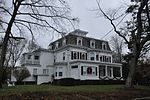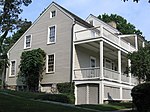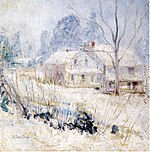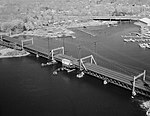Mianus, Connecticut
Mianus , formerly Mayamus and Upper Landing, is a neighborhood in the town of Greenwich in the U.S. state of Connecticut. Unlike other Greenwich neighborhoods such as Cos Cob or Old Greenwich, Mianus does not have its own ZIP code or post office. Mianus lies partly in the Cos Cob ZIP code, partly in the Riverside ZIP code area, and partly in the Old Greenwich ZIP code area. It lies at an elevation of 23 feet (7 m) and is home to an elementary school. Mianus was also home to the Mianus Motor Works, a marine-engine manufacturer.The Veterans Administration and the town of Greenwich, CT developed the village of 40 starter houses—approximately 800 square feet (74.3 sq m) each—after World War II as rental units for returning servicemen and their families. In the 1950s, as many as 90 children lived with their parents in these houses. The nearby Mianus River, Cos Cob harbor and an extensive woods provided the children with an opportunity to live, grow and play in natural habitats rarely found in American public housing projects. Jack T. Scully, who spent the first 18 years of his life here, has written a collection of coming-of-age poems, Mianus Village, celebrating its bygone way of life. The toponym Mianus is thought to derive from the name of Mayanno, an Indian chieftain.
Excerpt from the Wikipedia article Mianus, Connecticut (License: CC BY-SA 3.0, Authors).Mianus, Connecticut
River Road Extension,
Geographical coordinates (GPS) Address Nearby Places Show on map
Geographical coordinates (GPS)
| Latitude | Longitude |
|---|---|
| N 41.043888888889 ° | E -73.591111111111 ° |
Address
River Road Extension 152-156
06807
Connecticut, United States
Open on Google Maps










